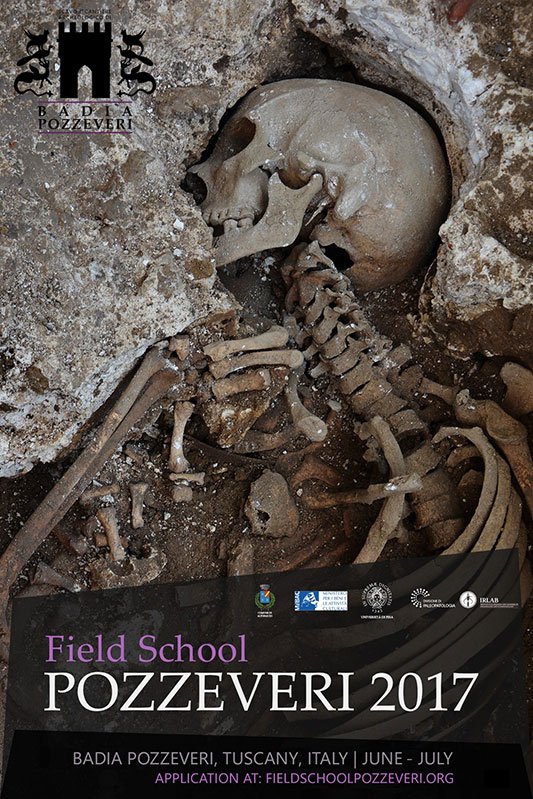
Submitted 27 February 2017 by Institute for Research and Learning in Archaeology and Bioarchaeology
Field school sexual harassment policy: http://www.irlabnp.org/fieldschoolpozzeveri/

The Field School in Medieval Archaeology and Bioarchaeology at Badia Pozzeveri (Lucca, Italy) is an academic program aimed at training students in archaeological and bioarchaeological field and laboratory methods. Excavations will take place at the church of “San Pietro a Pozzeveri” in the municipality of Altopascio. Badia Pozzeveri is located approximately 10 miles east of the city of Lucca, capital of the Tuscan province of the same name. San Pietro’s church was once part of a Camaldolese monastery, which was founded in the 11th century on the shores of Lake Bientina. The medieval lake, now entirely dried up, extended between Lucca and the Arno River. The monastery flourished during the 12-13th centuries thanks to its location along the Via Francigena, a major trade and pilgrimage route, which connected France and Northern Europe with Rome throughout the entire Middle Ages. The monastery’s decline started in the 14th century and eventually led to its dissolution in the 15th century. San Pietro’s church remained as the village’s center of worship and is still in use.
Previous excavations conducted at the site exposed human burials dated to the middle ages, the renaissance and modern (18th-19th c.) times. Additionally, archaeological investigations revealed the buried remnants of a post-medieval building adjacent to the church, as well as structures belonging to the medieval church and cloister. Excavations at the site have exposed the 19th c. cemetery (including burials attributed to the cholera epidemics that afflicted Tuscany in 1855 AD) and identified buried remnants of a post-medieval building adjacent to the church, as well as structures belonging to the medieval church and cloister. During the 2017 field season, the field school will continue to explore the medieval and post-medieval levels of the site, including the cemetery as well as the monastery’s ruins.
The field school is a project created by the University of Pisa and managed by IRLAB (Institute for Research and Learning in Archaeology and Bioarchaeology), investigating biocultural complexity in the region surrounding Lucca during the Middle Ages. Specifically, the research project has the following objectives:
Excavation and analysis of the monastery’s cemetery, with particular attention to population demography, burial typology, and funerary ritual. Bioarchaeological analysis of the medieval population buried at Badia Pozzeveri, with particular attention to biological diversity, paleopathology, and activity patterns. Reconstruction of the settlement’s evolution from the Early Middle Ages until Modern times. Analysis of material culture from a monastic center along the Via Francigena, with particular attention to trade dynamics, diffusion of technical knowledge and economic activities related to monastic life. Learning objectives of this course The field school at Badia Pozzeveri is an outstanding opportunity for students to gain practical experience in archaeological excavation and bioarchaeological investigation by working side-by-side with leading researchers in the field. The field school is designed to provide participants with knowledge of archaeological field methods, including:
Survey and excavation GIS (Geographic Information Systems) and informatics Bioarchaeological field and research methods Recovery, restoration, and analysis of human skeletal remains. Practical, hands-on experience in the field will be complemented by laboratory activity in archaeology and bioarchaeology. Lectures by the directors and instructors on their research will also provide students with insights in the theory and practice of archaeology and physical anthropology.
Copyright © 2024 American Association of Biological Anthropologists.
Site programming and administration: Ed Hagen, Department of Anthropology, Washington State University